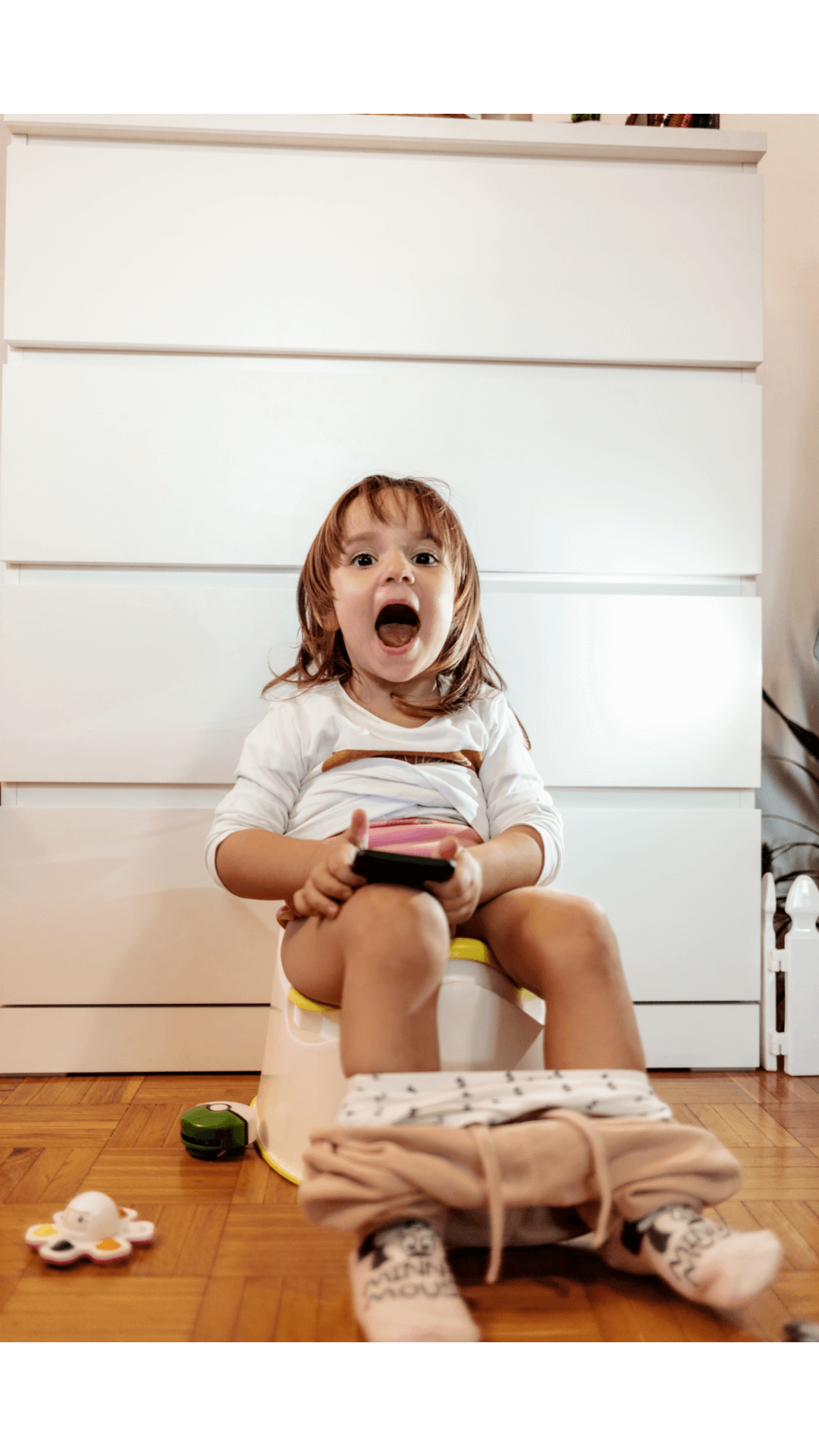While potty training can be exciting, it can sometimes be a tad daunting. Potty accidents, extra loads of laundry, maybe even frequent wake-ups during the night–potty training can be a lot, to say the least.
That’s why we’ve gathered valuable insights and tips from seasoned moms who have been through it all, sharing their tried-and-true methods for successfully accomplishing the potty training journey. Whether you’re a first-time parent or a veteran mom just looking for fresh ideas, get ready to be armed with five practical tips to make this process smoother and more rewarding for you and your child.
How to Know When to Start Potty Training
While you can start potty training at any age, most experts recommend following a child’s lead. “If they start initiating diaper changes, taking off a dirty diaper, hiding to eliminate in their diaper, looking uncomfortable when it’s wet, then it’s time,” says Kate Fritz, MA, BCBA, LBA, a board-certified behavior analyst and early intervention clinical manager who’s helped dozens of toddlers with potty training. Now, let’s get into tangible tips for this complete potty training guide.
5 Potty Training Tips from Vetted Moms
Tip #1: Avoid wet diapers
This simple yet effective tip helps little ones grasp the concept of staying dry and feeling uncomfortable when wet. “If it even had one little mushy spot, it was changed immediately. I think that since she was used to the feeling of being dry all of the time, being wet was something that would have been super uncomfortable,” says Nicole C.
Tip #2: Set potty alarms
Adult bladders are considerably larger than children’s, so we can go longer between potty breaks. But sometimes, that makes it harder to remember how soon our kids need to go. Timed reminders are great for this. “I set the ‘potty alarm’ on my phone. Every hour or so, the alarm played, and the boys knew it was time to go. Eventually, they would say… ‘potty alarm’ when they needed to go,” says Jami C.
Another mother, Tifani R., even mentioned setting an alarm every 15, 30, and 60 minutes to build up learning the sensation of having to go. This can help teach kids to get to know their bodies better while still having a timer as a backup.
Tip #3: Go naked
One unique potty training tip moms find success with is letting their child go nude at home. “We let Presley run around naked and the first time she peed on herself, she hated it and that helped her realize she needed to pee on the potty,” says Amy J. Another mother, Xia A., agrees. “I let William run naked. Crazy as that sounds. But he didn’t like the idea of peeing on himself,” she noted.
Allowing your little one to roam without diapers or pants can help them become more aware of their bodily functions and make the connection between the urge to go and using the potty. Plus, it minimizes the need for constant clothing changes–making the potty training journey a bit easier for moms. And another pro tip? “Don’t give in to diapers or pull-ups at all.. you may have to stay home for a week or so and get over the hump,” says Staci H. Whether it’s a three-day period or 2 weeks, keep going!
Tip #4: Positive reinforcement
As a parent, you probably already know your child loves praise–especially when learning something new. Amber C., a mom of two, suggests lots of positive reinforcement during their potty training journey. This creates a positive association with a new skill, making it more likely for them to repeat the behavior.
Plus, don’t be afraid to get your childcare team and older children involved in the encouragement. “All the other kids in his daycare were really supportive and would cheer for him when he would go–there were also a couple other boys toilet training too and they would buddy up together,” says mother Amy S.
And it doesn’t just stop at the porcelain throne. “We took him to the store and he picked out his “cool” undies and I cheered him on when he put them on!” says Brittany N. This simple approach not only boosts your child’s confidence but also strengthens your bond by celebrating achievements together during this critical developmental milestone.
Tip #5: Give elimination communication a try
Don’t worry, this method isn’t as intimidating as it sounds. Many moms find elimination communication much less time-consuming and cheaper than traditional potty training. One mom, Sarah F., even said this method was much less stressful for her.
From birth, babies instinctively do not want to soil themselves. They’ll even signal cues right before they have to “go” to avoid this. The idea with elimination communication is to learn their cue and associate that feeling with sitting on the potty. Look for cues like squinting, grunting, looking down, etc. Every child is different, but one thing’s certain–they will have some sort of cue. Some parents will also pair going potty with a noise such as a “hiss” or a “hum” to further build that communication connection.
The Bottom Line
It’s important to remember that there’s no one-size-fits-all approach to potty training. Each child is unique, and what works for one mom might not work for another. So, take these insights as guidance, and don’t be disheartened by setbacks or challenges. Whether your child is 8 months of age or 4 years, the key is finding what works best for you and your family’s needs. Embrace the potty process with patience, love, and flexibility, and before you know it, you’ll ditch the diapers and never look back.




